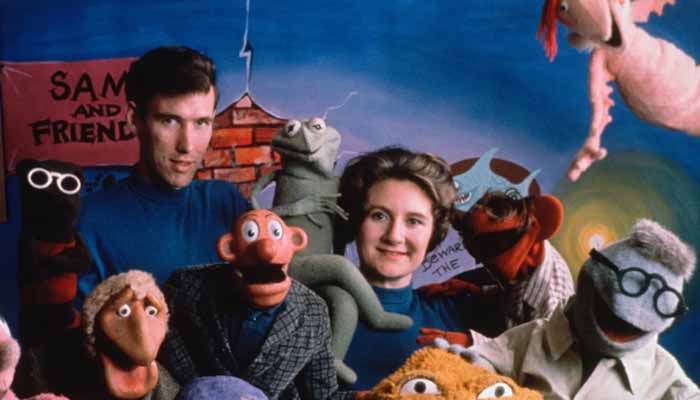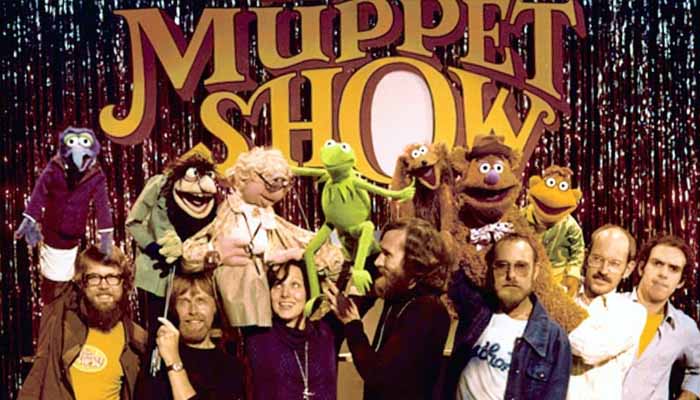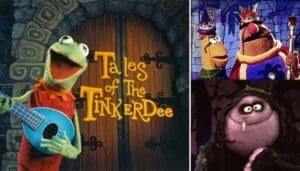It’s Not Easy Being 70 (Unless You’re Felt and Fabulous)
Hold onto your rubber chickens, folks, because we’re here to celebrate a truly monumental milestone! The user query initially suggested we’re toasting the 70th anniversary of The Muppet Show. And while that particular variety spectacle, which first graced our screens on September 5, 1976 , is a spry 48 years old, the core concept and beloved cast of characters known as The Muppets are indeed celebrating seven glorious decades of felt, foam, and pure, unadulterated mayhem! The visionary Jim Henson first brought these captivating creations to life in 1954 or 1955, with their official debut in the short-form television series
Sam and Friends in 1955.
This delightful factual nuance isn’t a mere correction; it’s an invitation to broaden the celebration. Instead of confining the festivities to just one iconic program, the longevity of The Muppets as a whole allows for a deeper dive into their remarkable journey. This expansive view enables a comprehensive exploration of their evolution, from their earliest experimental days to their modern streaming hits, enriching the story with historical depth and showcasing their enduring comedic genius.
From their very inception, The Muppets carved out a unique niche in entertainment. They are renowned for an inimitable blend of absurdist humor, classic slapstick, burlesque performance, and a wonderfully self-referential style of musical variety-sketch comedy. This distinct comedic DNA has captivated audiences for generations, creating a legacy that seamlessly weaves genuine laughter with heartwarming messages. Their magic lies in their ability to transcend age barriers, proving that a little bit of chaos, a lot of heart, and a frog trying to keep it all together can truly last a lifetime.
From “Sam and Friends” to Stardom: The Early Antics

The Muppets’ journey began not with a bang, but with a quiet, yet revolutionary, whisper. Their first appearances were in Sam and Friends, a short-form television series that aired from 1955 to 1961. It was during this pioneering period that Jim Henson famously coined the term “Muppet,” a charming portmanteau of “marionette” and “puppet”. Henson’s innovative spirit was evident from the start; he broke away from traditional puppetry by forgoing the physical proscenium arch, instead relying on the natural framing of the television set to create the illusion that his characters existed in the real world. This subtle yet profound shift laid the groundwork for the immersive quality that would become a Muppet hallmark.
As the 1960s unfolded, Kermit the Frog and Rowlf the Dog began to gain national exposure through appearances on popular late-night talk shows, most notably The Ed Sullivan Show, where they made their debut on September 18, 1966. These early Muppet sketches were far from simple children’s fare. They often delved into complex themes, offering subtle social commentary, such as the abstract “Business, Business” act or the “Monster Eating Machine” which critiqued consumerism. Imagine Kermit as a beatnik philosopher or an early version of Grover, then known as Gleep, appearing as a scheming fake elf. These performances clearly demonstrated that the Muppets were always conceived with a broader, often adult, audience in mind, setting the stage for the sophisticated humor that would define
The Muppet Show.
A pivotal, albeit temporary, detour occurred with their involvement in Sesame Street. This groundbreaking educational program debuted in 1969, bringing the Muppets widespread celebrity and international recognition. Designed to foster learning, particularly among inner-city preschoolers,
Sesame Street discovered that children were “transfixed” by the presence of Henson’s Muppets, making them central to the show’s immense success. While
Sesame Street was a global phenomenon, Jim Henson, ever the innovator, recognized the potential for his characters to be “typecast” solely as children’s entertainers. This strategic consideration led him to actively develop a new network television series distinct from
Sesame Street, one explicitly aimed at a more adult audience and designed to satirize sketch comedy. This progression reveals a deliberate artistic trajectory by Jim Henson. He leveraged the unparalleled fame gained from
Sesame Street as a springboard to launch The Muppet Show, a project that allowed him to return to and expand upon the adult-oriented, satirical humor he had explored in their earlier appearances. This move showcased a sophisticated understanding of how to manage a creative brand, ensuring the Muppets’ versatility and preventing them from being pigeonholed, ultimately leading directly to The Muppet Show‘s unique and broad appeal.
The Muppet Show: Where the Chaos Truly Conquered

The true explosion of Muppet mania arrived with The Muppet Show, which premiered in 1976 and ran until 1981. This flagship series unequivocally catapulted the Muppets to international recognition and celebrity status. It wasn’t just popular; for a significant period, it held the astonishing title of the “number one television program in the whole world”. Its groundbreaking sketch-variety format, infused with a unique vaudeville-style humor, and its legendary roster of celebrity guest stars, made it an instant classic.
At the heart of the show’s enduring appeal was its unforgettable cast of characters, each with their signature comedic traits and running gags:
- Kermit the Frog: The ever-optimistic, long-suffering leader, perpetually attempting (and often hilariously failing) to keep the chaotic Muppet Theater in some semblance of order. His iconic struggle with the absurdity around him became a relatable anchor.
- Miss Piggy: The glamorous, karate-chopping diva with a heart of gold (and a temper of titanium). Her volatile, yet undeniably passionate, inter-species love affair with Kermit was a central, legendary dynamic. Fans even formed the tongue-in-cheek “Committee to Award Miss Piggy an Oscar (CAMPO)” in 1979, a testament to her undeniable star power.
- Fozzie Bear: The well-meaning, joke-telling bear whose puns often fell flat, punctuated by his signature “Wocka Wocka!” Despite the relentless heckling from the balcony-dwelling Statler and Waldorf, Fozzie’s spirit was never truly dampened.
- Gonzo the Great: The eccentric stunt performer whose ambiguous species became a classic running gag, often referred to simply as a “whatever,” or even an alien in Muppets from Space. His bizarre, often painful, acts—such as eating a rubber tire to the music of “Flight of the Bumblebee”—perfectly encapsulated the show’s absurdist humor.
- The Electric Mayhem Band: Led by the wild and unpredictable Dr. Teeth, alongside Animal on drums, Floyd Pepper on bass, Janice on guitar, and Zoot on saxophone. Their groovy, chaotic musical numbers provided the show’s vibrant and often anarchic soundtrack.
- Statler and Waldorf: The quintessential heckling duo, always ready with a cutting remark or a groan-worthy pun from their balcony perch, serving as the show’s resident critics.
- Other Memorable Characters: The show also featured the accident-prone Dr. Bunsen Honeydew and his long-suffering assistant Beaker from Muppet Labs, the incomprehensible culinary genius The Swedish Chef , and the sinister-looking but often surprisingly friendly Uncle Deadly.
The show’s structure relied on recurring segments that became synonymous with its unique brand of humor. Audiences eagerly anticipated the surgical hilarity of “Veterinarian’s Hospital,” the explosive (and often disastrous) experiments of “Muppet Labs,” Fozzie’s perpetually interrupted “Monologue,” the chaotic social scene of “At the Dance,” and the often news-less “Muppet News Flash”.
A defining characteristic of The Muppet Show was its incredible roster of celebrity guests. These stars bravely (or perhaps foolishly) stepped into the Muppet chaos, often playing along with the puppets’ antics with remarkable comedic timing. It is a testament to the Muppets’ immense star power that, at their peak, “The Muppets became more famous than the actual celebrity guests”.
The true genius of The Muppet Show lies not just in its individual gags, but in its overarching narrative of a perpetually on-the-brink variety production. The humor is derived from the inherent tension between the Muppets’ earnest attempts to put on a professional show and the inevitable, delightful chaos that ensues due to their eccentric personalities and the theatrical setting. The show’s self-referential nature meant it constantly acknowledged its own fictional reality and the challenges of its production, effectively breaking the fourth wall. This created a meta-humor where the audience was implicitly in on the joke: the show was designed to be a charmingly disastrous spectacle that, paradoxically, always succeeded in entertaining. It was a masterclass in carefully orchestrated comedic paradox, where the chaos itself was the point, and its controlled nature made it consistently funny, endearing, and a timeless example of variety-sketch comedy.
Beyond the Stage: Movies, Mayhem, and Milestones

As their television success soared, The Muppets naturally diversified into theatrical films, allowing their stories and songs to reach even grander scales. Classics like The Muppet Movie (1979), The Great Muppet Caper (1981), and the charming The Muppets Take Manhattan (1984) cemented their place on the big screen.
Muppets Take Manhattan is particularly lauded as a “cinematic triumph,” showcasing their ability to translate their unique humor and heartwarming narratives to a feature-film format.
At the core of the Muppets’ enduring success was the visionary Jim Henson, who revolutionized puppetry and left an indelible mark on the entertainment industry. Beyond simply creating beloved characters and coining the term “Muppet” , Henson pioneered groundbreaking techniques that brought his felt creations to life in unprecedented ways. He developed the “live-hand” puppet technique, which allowed for incredibly expressive and nuanced performances, giving characters like Miss Piggy their iconic range of emotions. Henson also ingeniously experimented with camera angles and framing, creating the illusion that his puppets existed seamlessly in real space alongside human actors. His use of monitors for puppeteers to see their performances and his choice of soft, flexible fabrics for puppet construction further enhanced their natural movements and expressions, allowing them to connect emotionally with audiences.
Furthermore, Henson’s impact extended far beyond the Muppet universe. His Jim Henson Creature Shop became a hub for developing cutting-edge technologies like animatronics and early motion capture systems, influencing major films across Hollywood, including Star Wars: The Rise of Skywalker and The Jungle Book. The ability of the Muppets to convey such a wide range of emotions and perform complex comedic routines, making them feel genuinely “lifelike,” was a direct result of Henson’s relentless pursuit of technological and performance innovation. This technical mastery was integral to their artistic success and longevity. Without these innovations, the Muppets might have remained charming but limited, unable to achieve the cinematic scope or emotional depth that cemented their iconic status. This demonstrates that the Muppets’ enduring appeal and cultural impact are not solely due to their charming personalities or witty scripts; they are deeply rooted in Jim Henson’s foundational commitment to pushing the boundaries of the medium itself, blending artistic vision with groundbreaking technological innovation.
A new chapter for the franchise began with Disney’s acquisition of The Muppets (though notably excluding the Sesame Street and Fraggle Rock characters) in February 2004. This marked a period of continued presence and evolution, as the Muppets adapted to modern formats. Subsequent projects under Disney ownership have included films like
The Muppets (2011) and Muppets Most Wanted (2014), a primetime series The Muppets (2015-2016), and more recent successes like the Halloween special Muppets Haunted Mansion (2021) and the streaming series The Muppets Mayhem (2023).
The Enduring Giggle: Why They’re Still Relevant (and Funny!) Today
Even after seven decades, the Muppets’ unique comedic style—their blend of absurdity, slapstick, self-referential jokes, and vaudeville charm—remains as fresh and funny today as it was decades ago. Their humor effortlessly appeals to both adults and children, proving its universal and timeless quality. At its core, their comedy taps into relatable human (and Muppet) foibles and classic comedic tropes that simply never get old.
Beyond just laughs, the Muppets have been recognized by prestigious cultural institutions, including the American Film Institute, the Hollywood Walk of Fame, and the Library of Congress , solidifying their status as “icons of entertainment, education, and social commentary”. A consistent thread throughout their history has been their promotion of “inclusivity” and “kindness”. For example,
Sesame Street, co-created by Jim Henson, was a pioneer in diversity, featuring women in male-dominated fields and incorporating Spanish words into its curriculum. More recently,
The Muppets Mayhem proudly features a diverse human cast, providing valuable representation for modern audiences, with one cast member noting how the show offered a “neutral space” for her father, who grew up in England, to see a “fellow brown person on camera” for the first time. This emphasis highlights that their enduring relevance stems from their ability to entertain while subtly (or not so subtly) delivering positive, progressive messages.
The Muppets continue to adapt and thrive in the ever-changing media landscape. The recent Disney+ streaming series The Muppets Mayhem (2023), which follows The Electric Mayhem band’s quest for a platinum record, was “well received”. Its human co-stars praise the Muppets for embodying “unity. Joy. A laid back freeing mentality”. Other examples like
Muppets Haunted Mansion (2021) further demonstrate their versatility across different genres and platforms.
A key aspect of their authenticity and continued appeal lies in the ongoing discussion around maintaining the “soul” of the Muppets, particularly concerning the use of practical puppetry versus computer-generated imagery (CGI). The public discussion around Steve Whitmire, the former performer of Kermit, being dismissed for “creative differences” with Disney, notably included his belief that the company “did not understand the soul of The Muppets”. There is a clear and vocal call from fans and some creators for future projects to prioritize “practical” puppetry, as “CGI does not measure up well” when compared to the unique charm and comedic effectiveness of the original methods.
This creates a fascinating dynamic: while the core “soul” and humor of the Muppets are timeless, their continued presence requires constant adaptation to new media, changing audience expectations, and evolving societal conversations, such as the demand for diverse representation. The tension surrounding the preservation of their authentic essence, as seen in the discussions about puppetry techniques and creative direction, highlights an ongoing negotiation between their foundational identity and the pressures of modern production and market demands. Their ability to remain beloved for 70 years, despite these internal and external pressures, serves as a compelling demonstration of how a cultural phenomenon can evolve without losing its core identity.
Conclusion: Here’s to 70 More Years of “Mahna Mahna!”
In the grand tapestry of entertainment history, The Muppets hold a unique and irreplaceable thread. From Jim Henson’s pioneering puppetry techniques to the creation of universally beloved cultural icons, their journey over seven decades is a testament to boundless creativity and enduring charm. They have consistently delivered laughter, kindness, and the profound power of friendship, themes that resonate deeply across all their projects.
More than just entertainment, The Muppets function as a subtle, yet powerful, cultural barometer. Their consistent offering of comfort, inclusivity, and progressive messages—from Sesame Street‘s pioneering diversity to The Muppets Mayhem‘s contemporary representation—speaks to a persistent societal need for their unique blend of humor and heart. Indeed, the explicit sentiment that “the world right now needs The Muppets” underscores their role in contributing to a more kind and joyful culture, offering silliness in serious times and unity amidst division.
So, as we celebrate 70 years of “wocka wocka!” and “mahna mahna!”, the invitation stands: revisit your favorite Muppet moments, discover their newer projects, or simply bask in the unadulterated joy these felt friends have brought for seven glorious decades. Here’s to their continued presence and positive influence, and to the next 70 years of Muppet magic!




